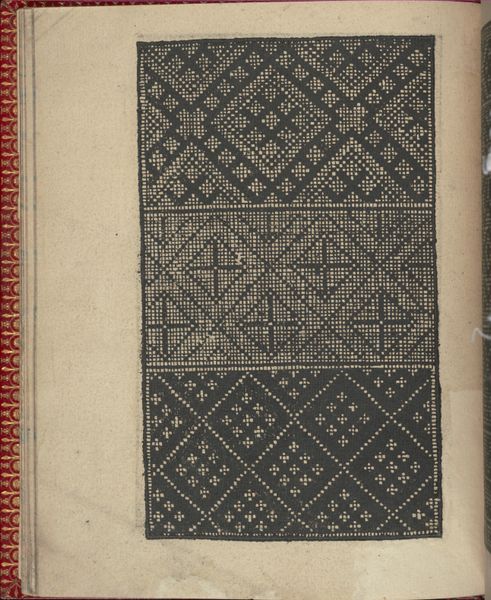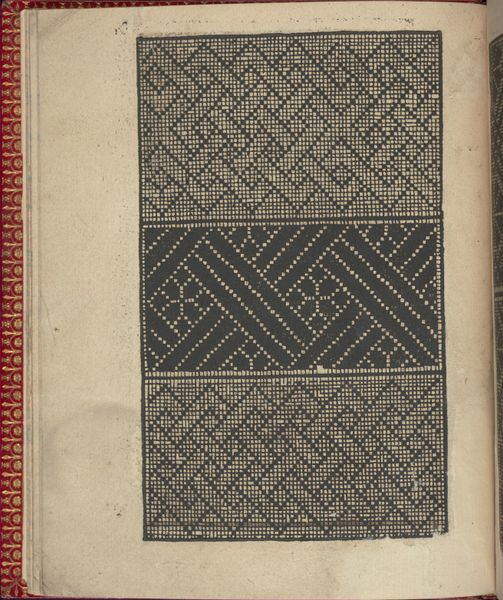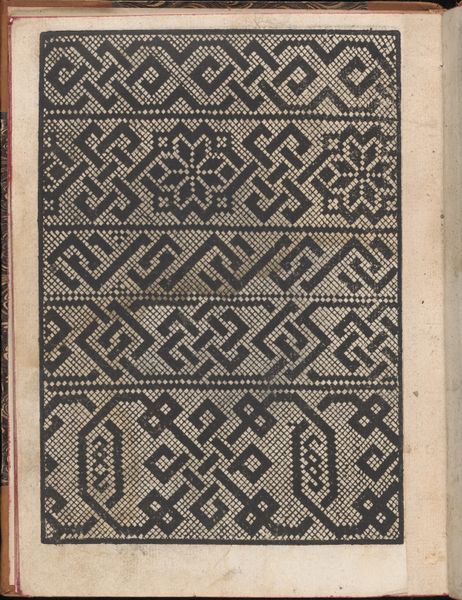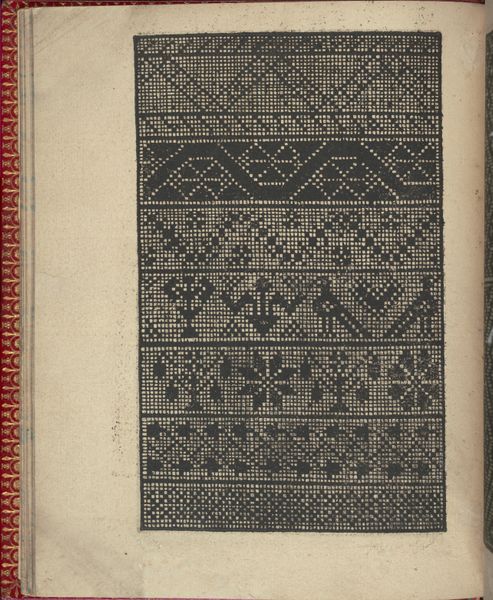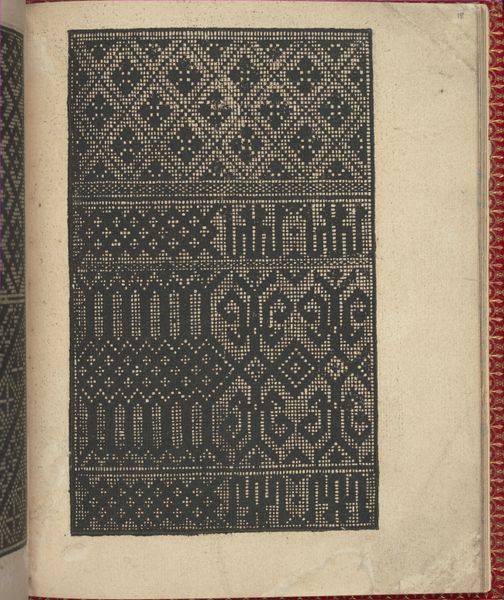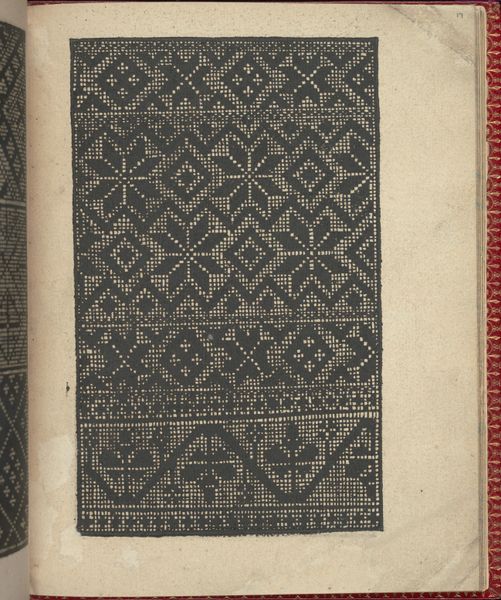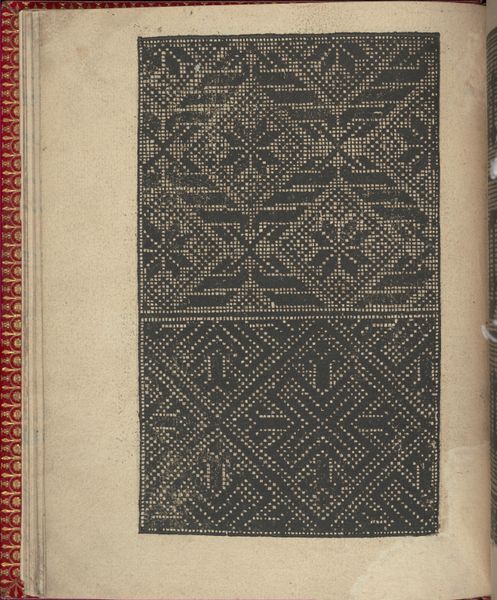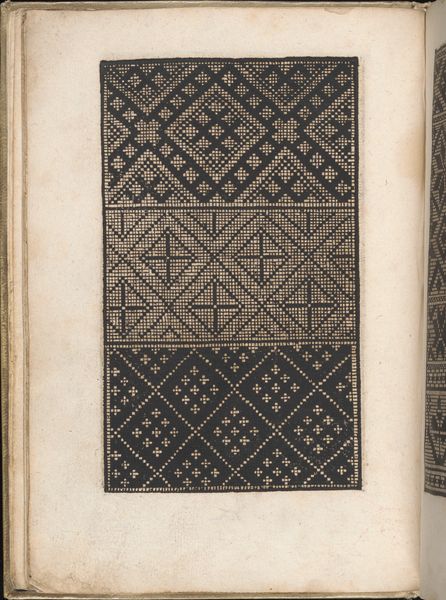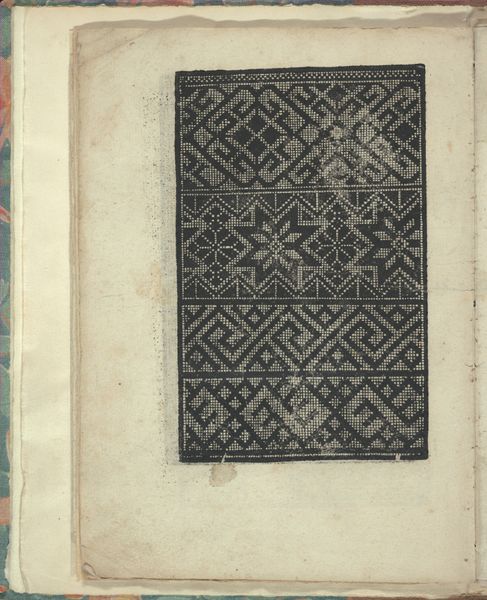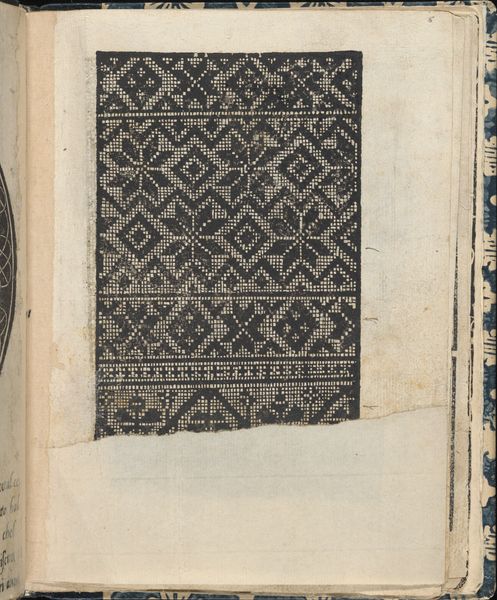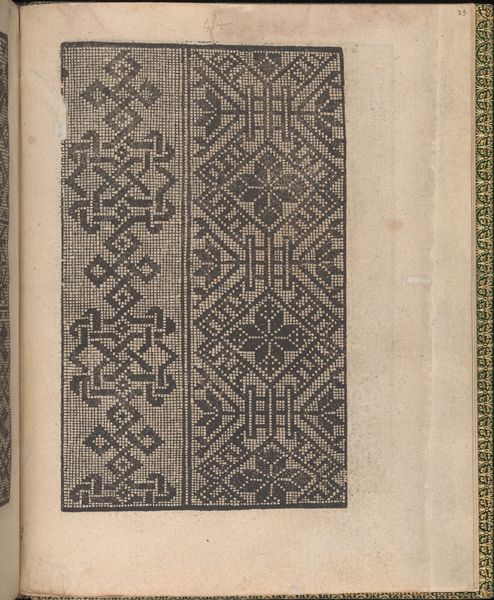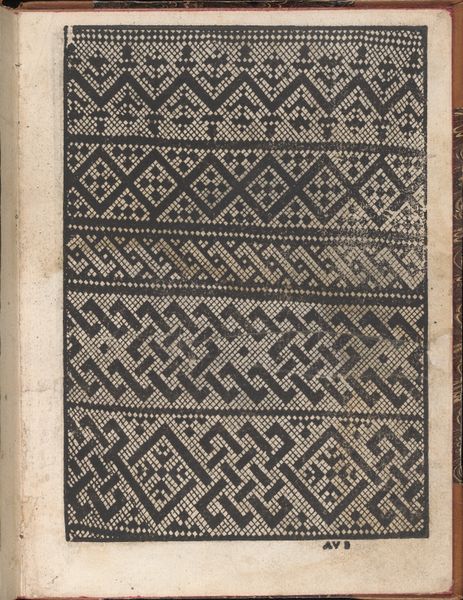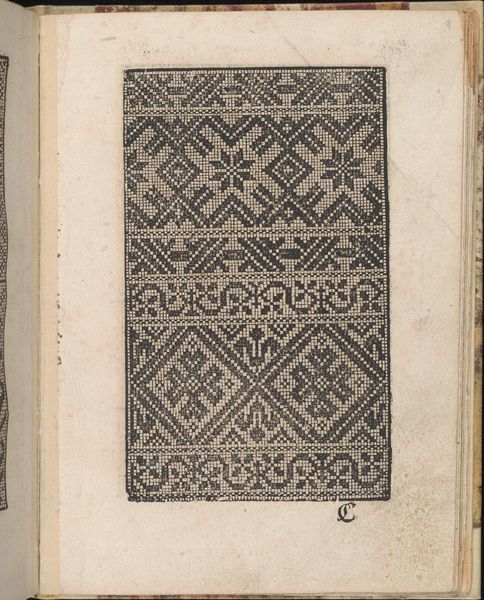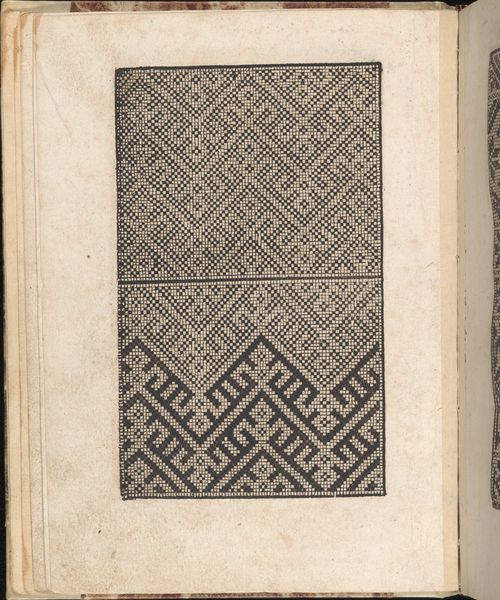
Ce est ung tractat de la noble art de leguille ascavoir ouvraiges de spaigne... page 3 (verso) 1527 - 1540
0:00
0:00
drawing, print, textile
#
drawing
#
medieval
# print
#
book
#
sketch book
#
textile
#
geometric
Dimensions: Overall: 6 7/8 x 5 11/16 in. (17.5 x 14.5 cm)
Copyright: Public Domain
This is page three from Willem Vosterman's book on needlework, printed in Antwerp during the 16th century. These aren't just patterns; they're a window into the social fabric of the time. The intricate designs reflect a growing interest in domestic skills and female education. The patterns themselves, with their geometric precision, signal the influence of mathematics and the broader humanist culture of the Renaissance. Printed manuals like this one democratized access to these skills. No longer confined to the elite, needlework became a symbol of status and refinement for a wider segment of society. To truly understand its significance, we need to examine the publishing industry of the time, the economics of textile production, and the changing roles of women in Northern Europe. Only then can we appreciate the full social and cultural meaning embedded in these deceptively simple patterns.
Comments
No comments
Be the first to comment and join the conversation on the ultimate creative platform.
